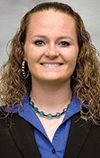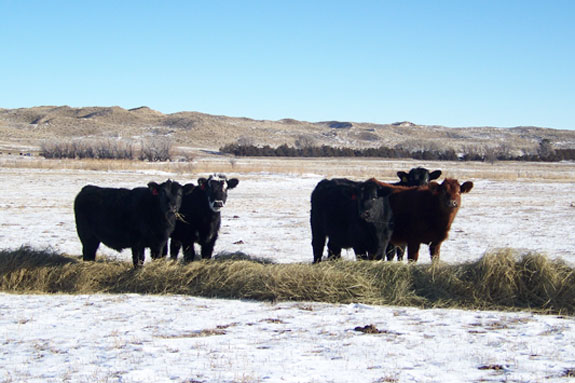
However, the Sandhills of Nebraska, located in the north-central part of the state, is where cattle is king.
This area encompasses roughly one-quarter of the state and is the largest sand dune formation in the Western Hemisphere.
In the 1870s, cattlemen came to the area and found it was great for pasturing cattle.
The sandy soil makes it challenging to grow crops, but it’s suitable for grazing.
The area was largely settled due to the 1904 Kinkaid Act, which allowed homesteaders to claim 640 acres of land, compared to the 160 allowed by the 1862 Homestead Act. Between 1910 and 1917, nearly nine million acres were claimed under this act.
However, many of these ranches broke up shortly afterwards, due to regulations that would not allow ranchers to fence federal range lands.
Those who stayed found the land was perfect cattle country. Today, the area has around 530,000 beef cattle.
In fact, Cherry County, located in the Sandhills, is the top cow county in the nation, with nearly 166,000 cows.
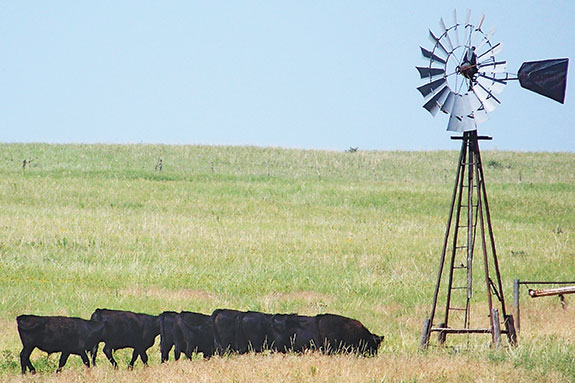
Built on local resources
One producer who settled in Nebraska early on was Harry Haythornthwaite, who started what is known today as Haythorn Land and Cattle Co.
Located in Arthur, Nebraska, Haythornthwaite came to America when he was just 16 in 1876.
He was charged with taking care of white-faced bulls headed for Texas and, upon arrival, was hired by the man who imported the bulls.
For the next eight years he worked for the man, making four trips up the Texas trail: two to Kansas and two to Nebraska. It was on his second trip that he decided to stay.
He opened a livery barn, shortened his name to Haythorn and married Emma Gilpin, a veterinarian’s daughter.
The two worked on a wagon crew, saving money and building their herd. In 1884, they filed on a land grant section, and their ranch was born.
Today, the ranch is run by great-grandson Craig Haythorn and his wife, Jody, as well as their sons, Sage and Cord. Sage’s wife, Kelley, is also part of the operation.
Haythorn Land & Cattle Co. is nestled in the rolling Sandhills of Nebraska.
This area contains the largest underground water source on the continent, the Ogallala Aquifer, Haythorn said.
The sprawling landscape it supports is also the largest grass-stabilized sand dune region in the world. Blue stem, grama and buffalo grasses hold down the sand and keep the dunes in place.
Summertime brings the delicate wildflowers peeking out of the lush grassland, and the curlews calling to one another in the clear blue skies.
To look out over the gently rolling hills on a quiet summer evening as the sun sets in the west is truly peaceful.
Today, the Haythorns raise foundation-bred working ranch horses as well as Black Angus, Hereford and Longhorn cattle. In the past, they have held a production sale which more than 4,000 people attended.
“Now, most of our horses are sold private treaty. We go to sales across the country, and between those and private treaty sales, we sell most of them that way. On average, we sell anywhere from 50 to 75 horses per year,” said Craig Haythorn.
He enjoys living in the area because of its resources as well as its location. “The greatest asset we have is our water. Normally we never have a dry year, and we have a lot of good grass. That availability of grass and water has allowed us to succeed,” he stated.
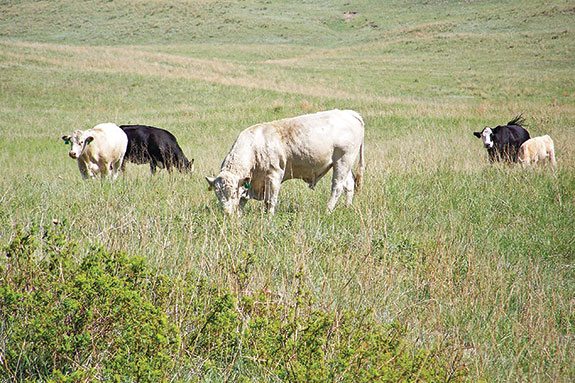
Diversity of operations
Another ranch in this area is Nolles Cattle Co., located in Bassett, Nebraska.
It was started in 1963, with Bert and Irene Nolles, after Bert purchased the ranch where he grew up from his grandmother.
Today, the ranch is run by their son, Mike, and his wife, Trudy, as well as their daughter, Katie.
The family runs around 450 cow-calf pairs, which are mostly commercial.
“We do have a small number of seedstock cattle, and we produce a large number of embryos. We have around 15 to 20 donor cows, and we show cattle also,” he said.
In addition to the ranching operation, the family also operates a commercial hunting and retreat business called Outback Adventures.
“That started in the mid-’70s to late ’70s, with my dad having a couple of good friends who came in and then it grew from there. We average around 35 to 50 hunters per year, depending on the year,” Mike Nolles said.
“What sets this family and ranching operation apart from others is the passion that exists for all that we do in business,” he said. “Whether it be a group of hunters that stay here, or a potential bull or female customer, we stake our names and reputation on what we sell.”
He continued, “We know our businesses and stay on top of what these industries need and desire.
“We do not participate in fads but believe in a holistic or whole-need approach to what we do. Just because a judge at a livestock show reasons his class-winning animal does not mean those characteristics are in demand by a commercial cattleman.
“We thoroughly enjoy working on our breeding programs as well as our marketing programs and make those decisions as a family.”
The family utilizes reproductive technologies and believes this helps them move their breeding program forward.
“We were one of the first livestock operations to utilize artificial insemination in the early ’60s, continue to do so today and also have an extensive embryo transfer program and offer commercial embryo placement for other breeders.
“To do this requires a top-notch vaccination and nutrition program, and we utilize several veterinarian sources and feed nutritionists,” he stated.
They believe in taking care of the animals to the best of their ability and pride themselves on quality.
“A philosophy that Bert held for all of his ranching years is still in place today, and that is that quality is much easier and cheaper to breed on than it is to feed on,” Nolles stated.
“We require our females to be easy keepers, milk moderately, be structurally sound, breed easily and look like females. The herd sires we select for A.I. and ET must sire tremendous females first and foremost.”
Building relationships has been essential to their business. “Many times throughout the year we have cattlemen visit, and all guests are invited to stay with us when they tour the ranch.
“We value our friendships made over the years. One of Katie’s biggest thrills is maintaining the relationships with fellow purebred breeders and bull customers that were started by her grandparents and has continued down several generations of these breeders and customers,” he explained.
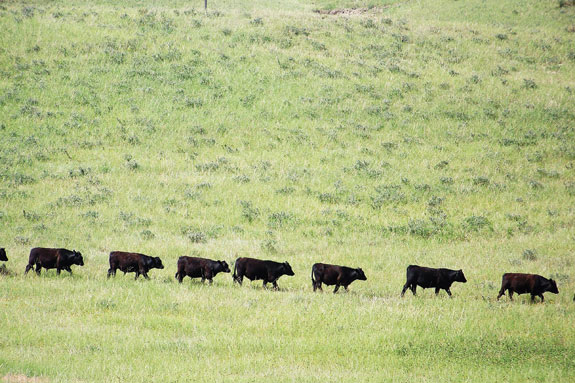
Packing close to home
It’s not just cattle producers who call this area home, however. The area also boasts a local meat packing plant, called Sandhill Ranchers Beef Co.
“At Sandhill Ranchers Beef Company, we process only cattle born and bred in the Sandhill region of Nebraska and southern South Dakota, within about a 120-mile radius of our plant.
“Our company is comprised of 96 ranching families who pooled their resources to remodel and reopen the Mullen Packing Plant south of Mullen, Nebraska,” said Christian Harvey, one of the owners of the business.
He continued, “Not many ranchers own a facility that processes their cattle exclusively like we do.
“Because we own the USDA-inspected facility, we control every aspect of production from pasture to plate, ensuring only the highest-quality beef products are produced.
“Our primary objective is to give our customers the delicious beef-eating experience that our ranching families enjoy every day.”
The plant is family-owned and operated by Rick Banderway, Christian Harvey and Louis Day, and they enjoy being able to offer local producers a local market to sell to. This also allows them to control the quality they produce.
“Private ownership and management of our plant means that not only do we support local ranches, but we also ensure our beef has met some of the most rigid food safety standards anywhere.
“Our ranching families are supplying us with natural, hormone-free cattle raised on their ranches using good husbandry practices.
“If these operations are profitable, the families can offer their growing sons and daughters the opportunity to stay on the land, sharing in the ranching operation. This will stimulate the local economy and help sustain our rural communities,” stated Harvey.
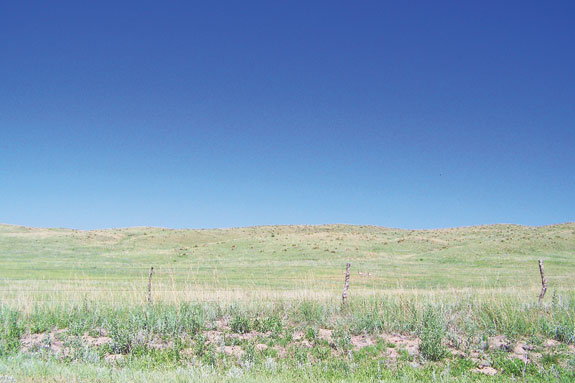
Promoting the region
The Nebraskan Sandhills will continue to be a mecca for cattle producers, with extensive grazing land and abundant water.
This area produces more cattle than anywhere in the country and will likely remain an area where cattle is king.
The Sandhills Cattle Association is the local association for beef producers in the area.
This association serves to help promote local beef and market the cattle raised in the area.
“We are an organization of ranchers in the Sandhill region. We strive to provide educational opportunities through meetings and programs – and bring in speakers to talk about timely topics in the beef industry,” said Ronna Morse, manager for the Sandhills Cattle Association.
She continued, “We also have an annual ranch tour where members can visit other members’ places and see how they work.”
The organization also puts out a bulletin that allows producers to know what feed and pasture is available – and with marketing information on the cattle members are selling.
“We have over 500 ranch members and 200 associate members which are businesses and partners. We have mostly cow-calf members, but we also have some yearlings and feedlot businesses,” Morse stated.
“It has a great resource of grass and water. That has made it an ideal place for raising cattle for many years,” she stated. ![]()
Robyn Scherer is a freelance writer based in Colorado.
PHOTOS
PHOTO 1: The Sandhills Cattle Association is the local association for beef producers in the area. This association serves to help promote local beef and market the cattle raised in the area.
PHOTO 2: In the 1870s, cattlemen came to the Sandhills and found it was great for pasturing cattle.
PHOTO 3: The Sandhills region has around 530,000 beef cattle today.
PHOTO 4: A group of yearlings graze on the Nebraskan Sandhills.
PHOTO 5: The Nebraskan Sandhills offer cattlemen an abundant supply of grass and water, two essential ingredients to raising cattle. Photos courtesy of Sandhills Cattle Association.
